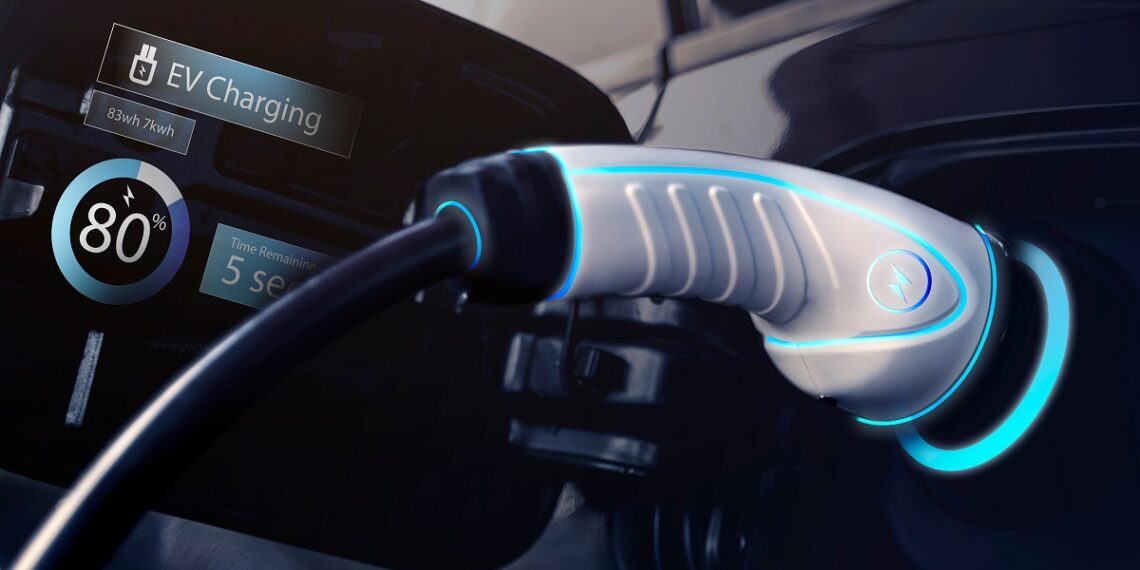Can you tell us about your background and current role in the space?
I’m currently based in Washington, DC. I have been involved in the lithium-ion battery supply chain as an independent analyst and an advisor to investors and companies along the supply chain, whether they’re EV manufacturers, oil and gas players, or technology players, for the last 14 years. Prior to that I was in New York for about 20 years with roles across the financial sector.
I really have two key areas of focus. Number one, I call the extreme upstream. So, if we are going to decarbonize or electrify the economy, where is all this raw material going to come from? Number two, how do we build these supply chains? A lot of the metals like lithium, cobalt, graphite, rare earths are not rare. What is rare is actually producing them at scale and on spec, and so I do a lot of work with investors trying to answer that specific question. How do we scale critical metal supply chains in an efficient and productive way?
My second area of focus in what I call the extreme downstream. Specifically, battery recycling and that entire ecosystem. Over the last seven years I’ve been heavily involved in lithium-ion battery recycling including board-level experience. Really understanding these threats and opportunities and helping investors of all shapes and sizes figure out where along the supply chain they want to play is a core objective of mine.
There’s been a lot of geopolitical tension globally over the past few years. What’s the role of critical minerals in terms of national security and regulatory discourse?
I think if there’s one change that all branches of government have come to embrace, it’s the fact that the line between economic security and national security has become blurred. There are a host of factors behind this, but a major determinant is the rise of China as an industrial and technological competitor to the US and its allies.
There have been multiple China shocks over the last couple of decades, initially with China joining the World Trade Organization and rapidly building its own industrial capacity, leveraging a cheaper labour price and industrial espionage. While we can debate Chinese tactics, what is not debatable is that it is commodities, battery metals in particular, that sit at the centre of that industrial capacity. The second China shock is the fact that China is now moving upstream to use its export model to inundate the markets globally with higher-quality goods such as electric vehicles – to the detriment of European automotive markets in particular. This is part of what has pushed western governments to move towards more domesticated and vertically integrated supply chains and some form of technological self-sufficiency. Can we succeed without some form of Chinese participation in our supply chains? That remains to be seen. The political class in Washington DC thinks so but is protecting our strategic industries through tariffs and export restrictions.
What you see happening here in North America and in the European Union is the attempt to catch up as national security and economic security are really one and the same.
A question for us in the West is how can we efficiently allocate capital to build out strategic supply chains? The lithium-ion battery supply chain is sort of like the Hydra, you’ve got many heads, such as mining and refining, cathode and anode production, cell and pack production and recycling, all of which have their own supply and demand dynamics, and capex and opex dynamics. Managing that is really the biggest challenge for Western policy makers and companies in the coming years. Raising the capital isn’t the challenge, either from public or private sources. Allocating it amidst a backdrop of increasing pricing volatility is the challenge.
Where are these raw materials coming from? Who is funding new projects for exploration to get key metals out of the ground?
The challenge right now is how to manage high volatility in metals prices as they wreak havoc with supply chain economics. If we were having this conversation in late 2020, spot battery grade lithium carbonate was priced at about US$6500/t. Within the next two years or so, that price went to roughly US$80,000/t. It was never sustainable and while some of the price increase was demand driven, a lot of it was the fear of missing out.
So, you saw this exponential rise in the price of lithium, and then over the next 24 months or so, you saw pricing collapse back to around US$10,000/t which is where we are today. So, while the bleeding has stopped, the pace and timing of any sustained increase in pricing is what investors are wrangling with. I think you need to see lithium pricing double from where it is today to bring any significant greenfield capacity online.
So, what’s going to turn this market around? Obviously, higher prices. What brings about higher prices? Supplier discipline through slower expansions and mines with poor economics going in to care and maintenance. We have seen some of this but need to see more before a new cycle can commence. You’re not going to incentivize either mining companies or individual investors to fund greenfield projects at current metals prices.
I think the name of the game over the next year and a half or so is going to be consolidation and M&A. We saw Rio Tinto acquire Arcadium recently for US$6.7B which is a sizable deal in lithium. I remember when Albemarle bought Rockwood for US$6.2B. That was a transformational deal for Albemarle and the Rio Tinto – Arcadium deal could be similarly transformational for Rio. Piedmont Lithium and Sayona have agreed to merge their respective businesses and ideally supply the North American market as it grows. You couple these types of deals with capacity cuts, many of which we’ve seen in Western Australia, and this will put a floor under lithium prices.
I think we’re probably 18 to 24 months away from a new metals cycle. And the ultimate irony is that when everything’s down and out of favour is when you should be investing. That’s why the Rio Tinto acquisition of Arcadium was so interesting and ultimately will be very beneficial for Rio Tinto because they are buying at the bottom. But it is challenging right now from a macro perspective. You’ve got the political dust still settling in the wake of Trump’s election. Investors and corporations essentially want policy certainty before investing in the supply chain.
How do you think the new US administration will impact supply chains and the deglobalization trend that we’re seeing with electrification?
It’s becoming clearer, but the dust is still settling. If we look at the Inflation Reduction Act (IRA), certain parts that deal with electrification are likely to be amended or done away with entirely. One section in the crosshairs is 30D, the consumer tax credit for up to US$7500 per vehicle. That was always tough for consumers to qualify for, and its removal will negatively affect EV manufacturers here in different ways.
However, some of the other subsections of the IRA are incredibly valuable and strategic, including section 45X, which offers a 10% credit on operating expenses. So, if you are, for example, producing battery grade lithium or you’re recycling material in the US, you can qualify for that 10% opex credit. That’s not a huge tailwind for domestic producers of these critical materials, but every advantage helps from a cost competitive standpoint. The other piece of 45X, which is much more important, and much more strategic because it focuses on bringing foreign capital to the US, is a US$45/KWh tax credit, impacting companies producing either battery cells or battery modules in the US.
When you look at the financial results of a company like Panasonic, that is producing battery modules here in the US, it is incredibly lucrative. I can’t see any reason why the Trump Administration would want to disadvantage domestic battery production when North America is a high-cost jurisdiction to begin with.
I think one of the challenges with the IRA is that it was misdirected in terms of the pieces of the supply chain that it’s trying to incentivize. It’s still very capital intensive to build up battery upstream capacity in the US, and so if the Trump Administration re-examines the IRA, I’m hopeful that a similar level of incentives can be directed towards mining and refining.
The US Department of Energy coordinates the Loan Programme Office (LPO), which has survived multiple Republican and Democratic administrations, and I would expect the LPO to survive the next Trump Administration too. The LPO has been very busy of late issuing conditional approval for a host of loans along the battery supply chain before the transfer of executive power in the White House in January. That almost certainly will slow down under President Trump, so the loans and grants coming out of the Department of Energy to build the supply chain may may not be there in the same sort of quantum that they have been in the last few years.
Another important item to watch is the effect of President Trump’s threatened tariffs. He’s talked about 60% on Chinese goods and 10% globally. Recently he talked about a 25% tariff on materials coming in from Mexico and Canada. Tariffs are going to make this supply chain, and battery material processing capability, more expensive absent a stronger US dollar to mitigate the increase in pricing.
China reached a big milestone this year with new energy vehicles surpassing internal combustion engine vehicles. Are we seeing similar trends globally in terms of the growth of EV adoption?
The EV story is a China story, it always has been, and arguably it always will focus on China. EV penetration rates are 50% in China today, but much lower in the EU and the US. You’re unlikely to see EV penetration rates in the EU or North America anywhere close to China anytime soon. My bullish case for North America would be an ultimate EV penetration rate of around 30%. Now you may think that a 30% EV penetration rate is disappointing, but when you have a market where 16M cars per year are sold, 30% of 16M is a sizeable chunk.
The biggest issues right now in western markets are with range anxiety and charging infrastructure and the general cost of EVs. I don’t think that range anxiety is an issue and there is a huge push to add fast charging ports, again backed by legislation like the IRA, and this is the key to changing the scepticism of the consumer. The charging infrastructure in China is much more embedded than here in North America, but they have been focused on this roll out longer than we have here and are operating under different incentives to build that infrastructure.
How do you see battery recycling impacting supply moving forward?
I am enormously bullish on the possibility of lithium-ion battery recycling becoming its own sustainable business and ecosystem, and ultimately impacting supply of the raw materials in a positive way. I think this will really take hold in the middle of the next decade.
However, I don’t see recycling making a significant impact on supply of these materials until then. And there are several reasons for that. Number one, the amount of feedstock is small but growing. It’s not a gigantic market yet, but it will be soon.
This huge wave of feedstock in the form of end-of-life packs is not going to materialize before 2030 at the earliest, and then I wouldn’t think that recycling would provide more than about 10% of lithium supply. If you want a crazy prediction, I think that you could see a situation where battery recycling capacity has been built out, supply chains are optimized, and with ample recycling feedstock in the market, you could have virgin mined material for the battery business flat lining and more and more of the raw materials, such as the lithium, the cobalt, the graphite sourced from a vertically integrated circular recycling supply chain. To be clear, I wouldn’t foresee this before mid to late in the next decade, but many predictions about sources of supply, pricing, etc have been wrong in the past and I think it’s equally naïve to think that virgin mined material will always be the primary source for the lithium-ion battery business.












